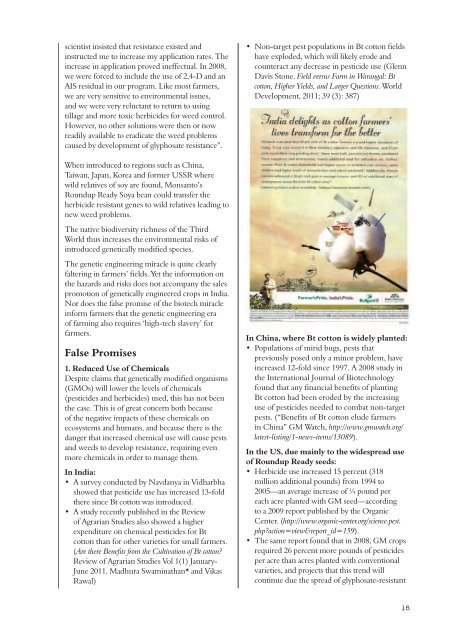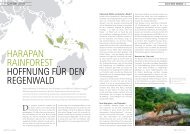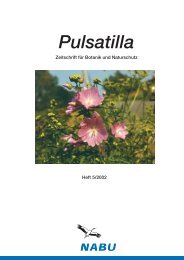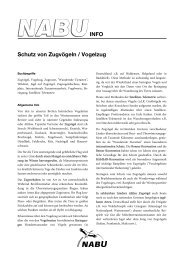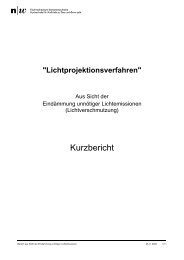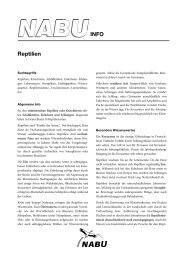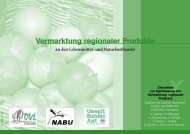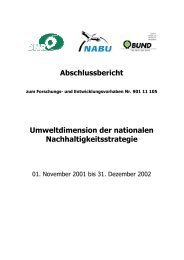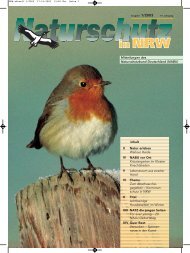Studie "The GMO-emperor has no clothes" (engl.) - Nabu
Studie "The GMO-emperor has no clothes" (engl.) - Nabu
Studie "The GMO-emperor has no clothes" (engl.) - Nabu
You also want an ePaper? Increase the reach of your titles
YUMPU automatically turns print PDFs into web optimized ePapers that Google loves.
scientist insisted that resistance existed and<br />
instructed me to increase my application rates. <strong>The</strong><br />
increase in application proved ineffectual. In 2008,<br />
we were forced to include the use of 2,4-D and an<br />
AIS residual in our program. Like most farmers,<br />
we are very sensitive to environmental issues,<br />
and we were very reluctant to return to using<br />
tillage and more toxic herbicides for weed control.<br />
However, <strong>no</strong> other solutions were then or <strong>no</strong>w<br />
readily available to eradicate the weed problems<br />
caused by development of glyphosate resistance”.<br />
Non-target pest populations in Bt cotton fields<br />
have exploded, which will likely erode and<br />
counteract any decrease in pesticide use (Glenn<br />
Davis Stone. Field versus Farm in Warangal: Bt<br />
cotton, Higher Yields, and Larger Questions. World<br />
Development, 2011; 39 (3): 387)<br />
When introduced to regions such as China,<br />
Taiwan, Japan, Korea and former USSR where<br />
wild relatives of soy are found, Monsanto’s<br />
Roundup Ready Soya bean could transfer the<br />
herbicide resistant genes to wild relatives leading to<br />
new weed problems.<br />
<strong>The</strong> native biodiversity richness of the Third<br />
World thus increases the environmental risks of<br />
introduced genetically modified species.<br />
<strong>The</strong> genetic engineering miracle is quite clearly<br />
faltering in farmers’ fields. Yet the information on<br />
the hazards and risks does <strong>no</strong>t accompany the sales<br />
promotion of genetically engineered crops in India.<br />
Nor does the false promise of the biotech miracle<br />
inform farmers that the genetic engineering era<br />
of farming also requires ‘high-tech slavery’ for<br />
farmers.<br />
False Promises<br />
1. Reduced Use of Chemicals<br />
Despite claims that genetically modified organisms<br />
(<strong>GMO</strong>s) will lower the levels of chemicals<br />
(pesticides and herbicides) used, this <strong>has</strong> <strong>no</strong>t been<br />
the case. This is of great concern both because<br />
of the negative impacts of these chemicals on<br />
ecosystems and humans, and because there is the<br />
danger that increased chemical use will cause pests<br />
and weeds to develop resistance, requiring even<br />
more chemicals in order to manage them.<br />
In India:<br />
A survey conducted by Navdanya in Vidharbha<br />
showed that pesticide use <strong>has</strong> increased 13-fold<br />
there since Bt cotton was introduced.<br />
A study recently published in the Review<br />
of Agrarian <strong>Studie</strong>s also showed a higher<br />
expenditure on chemical pesticides for Bt<br />
cotton than for other varieties for small farmers.<br />
(Are there Benefits from the Cultivation of Bt cotton?<br />
Review of Agrarian <strong>Studie</strong>s Vol 1(1) January-<br />
June 2011. Madhura Swaminathan* and Vikas<br />
Rawal)<br />
In China, where Bt cotton is widely planted:<br />
Populations of mirid bugs, pests that<br />
previously posed only a mi<strong>no</strong>r problem, have<br />
increased 12-fold since 1997. A 2008 study in<br />
the International Journal of Biotech<strong>no</strong>logy<br />
found that any financial benefits of planting<br />
Bt cotton had been eroded by the increasing<br />
use of pesticides needed to combat <strong>no</strong>n-target<br />
pests. (“Benefits of Bt cotton elude farmers<br />
in China” GM Watch, http://www.gmwatch.org/<br />
latest-listing/1-news-items/13089).<br />
In the US, due mainly to the widespread use<br />
of Roundup Ready seeds:<br />
Herbicide use increased 15 percent (318<br />
million additional pounds) from 1994 to<br />
2005—an average increase of ¼ pound per<br />
each acre planted with GM seed—according<br />
to a 2009 report published by the Organic<br />
Center. (http://www.organic-center.org/science.pest.<br />
php?action=view&report_id=159).<br />
<strong>The</strong> same report found that in 2008, GM crops<br />
required 26 percent more pounds of pesticides<br />
per acre than acres planted with conventional<br />
varieties, and projects that this trend will<br />
continue due the spread of glyphosate-resistant<br />
15


